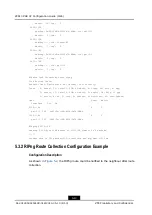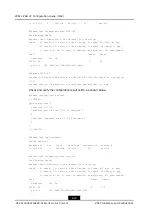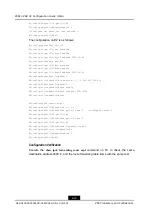
Chapter 6 OSPFv3 Configuration
Table 6-1 Similarities and Differences Between OSPFv3 LSAs and OSPFv2 LSAs
OSPFv2 LSA
OSPFv3 LSA
Similarities with and Differences from
OSPFv2 LSAs
Router LSA
Router LSA
Network LSA
Network LSA
The name is the same and the function
is similar, except that the LSA no longer
describes address information but is used
only to describe the topology structure of
the routing area.
Network Summary LSA
Inter Area Prefix LSA
ASBR Summary LSA
Inter Area Router LSA
The function is similar but the name is
different.
AS External LSA
AS External LSA
Both the function and the name are
completely the same.
Link LSA
The LSA is newly added.
Intra Area Prefix LSA
The LSA is newly added.
6.2 Configuring OSPFv3
This procedure describes how to configure the attributes and functions for OSPFv3
protocol routes, including protocol attributes, interface attributes, route summarization,
redistributing routes into OSPFv3 from other routing protocols, and route load sharing.
Steps
1.
Enable OSPFv3.
Step
Command
Function
1
ZXR10(config)#
ipv6 router ospf
<
process-id
>[
vrf
<
vrf-name
>]
Enables the OSPFv3 process.
2
ZXR10(config-ospfv3-process-id)#
router-id
<
router-id
>
Specifies the Router ID for an
OSPFv3 process.
<
process-id
>: OSPFv3 process ID, range: 1–65535.
vrf
<
vrf-name
>: VRF name, range: 1–32 characters.
<
router-id
>: OSPF router ID in IP address format.
OSPFv3 instances cannot run properly until the router ID is configured through the
router-id
command.
2.
Configure OSPFv3 protocol attributes.
6-5
SJ-20140504150128-018|2014-05-10 (R1.0)
ZTE Proprietary and Confidential
















































